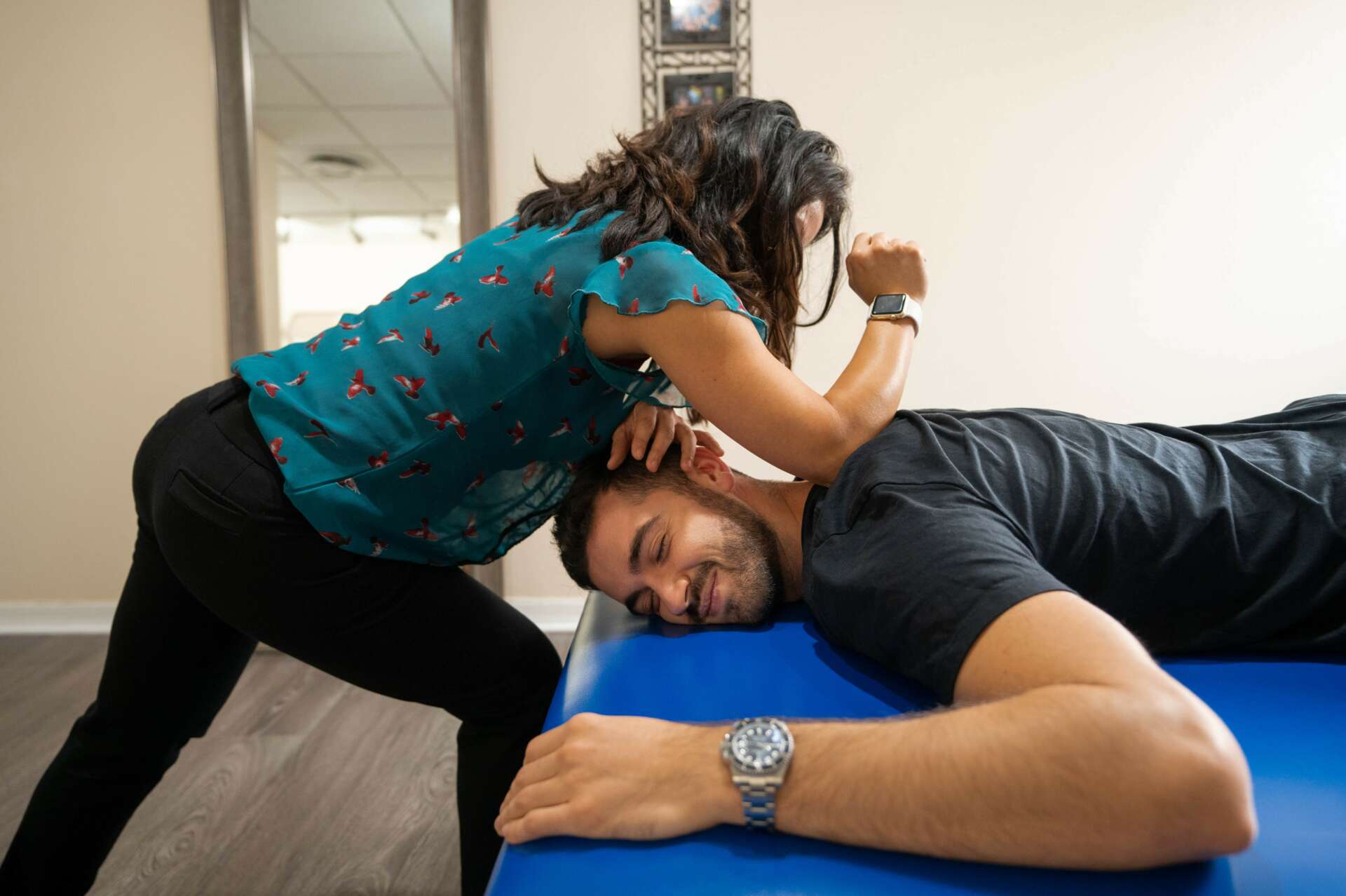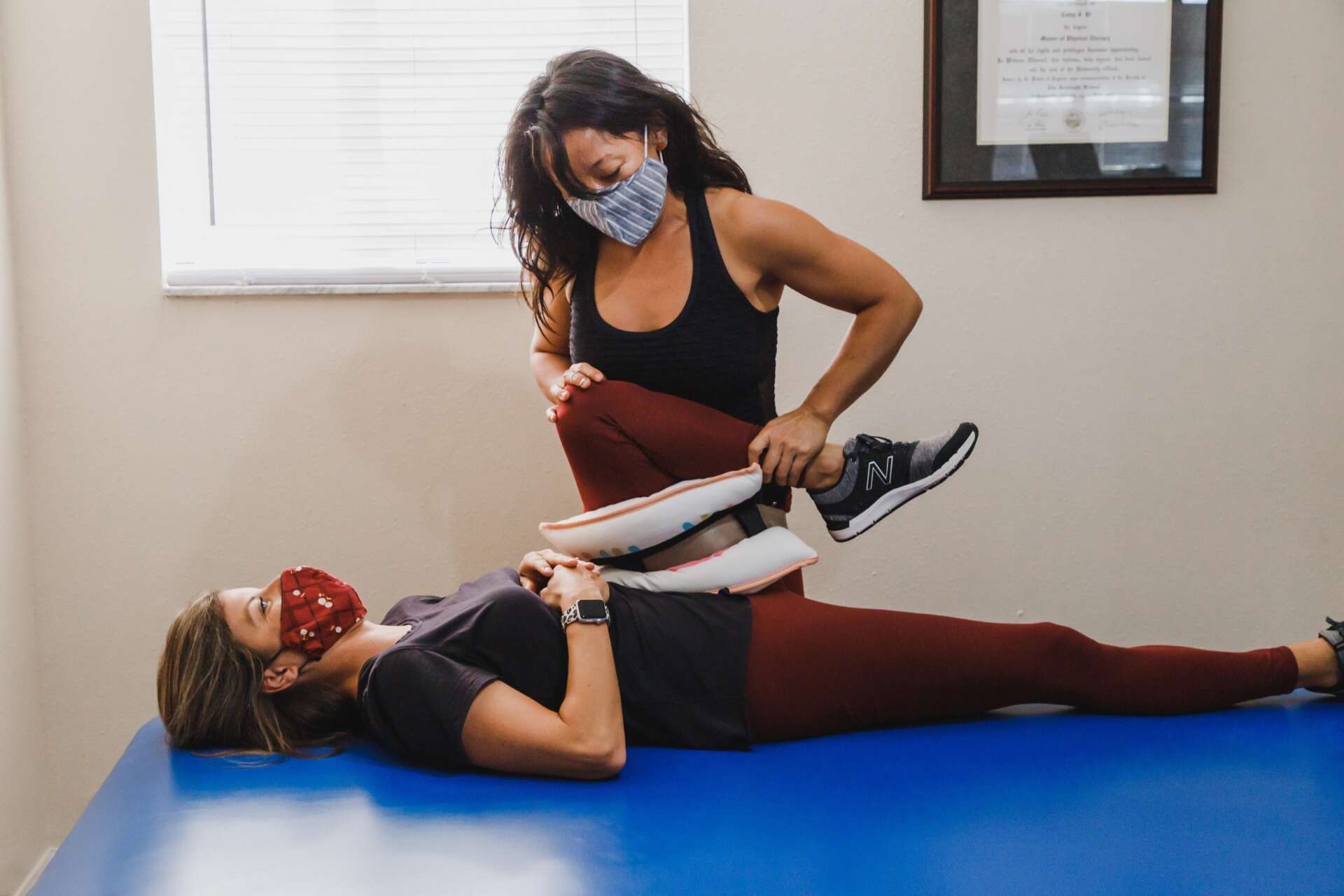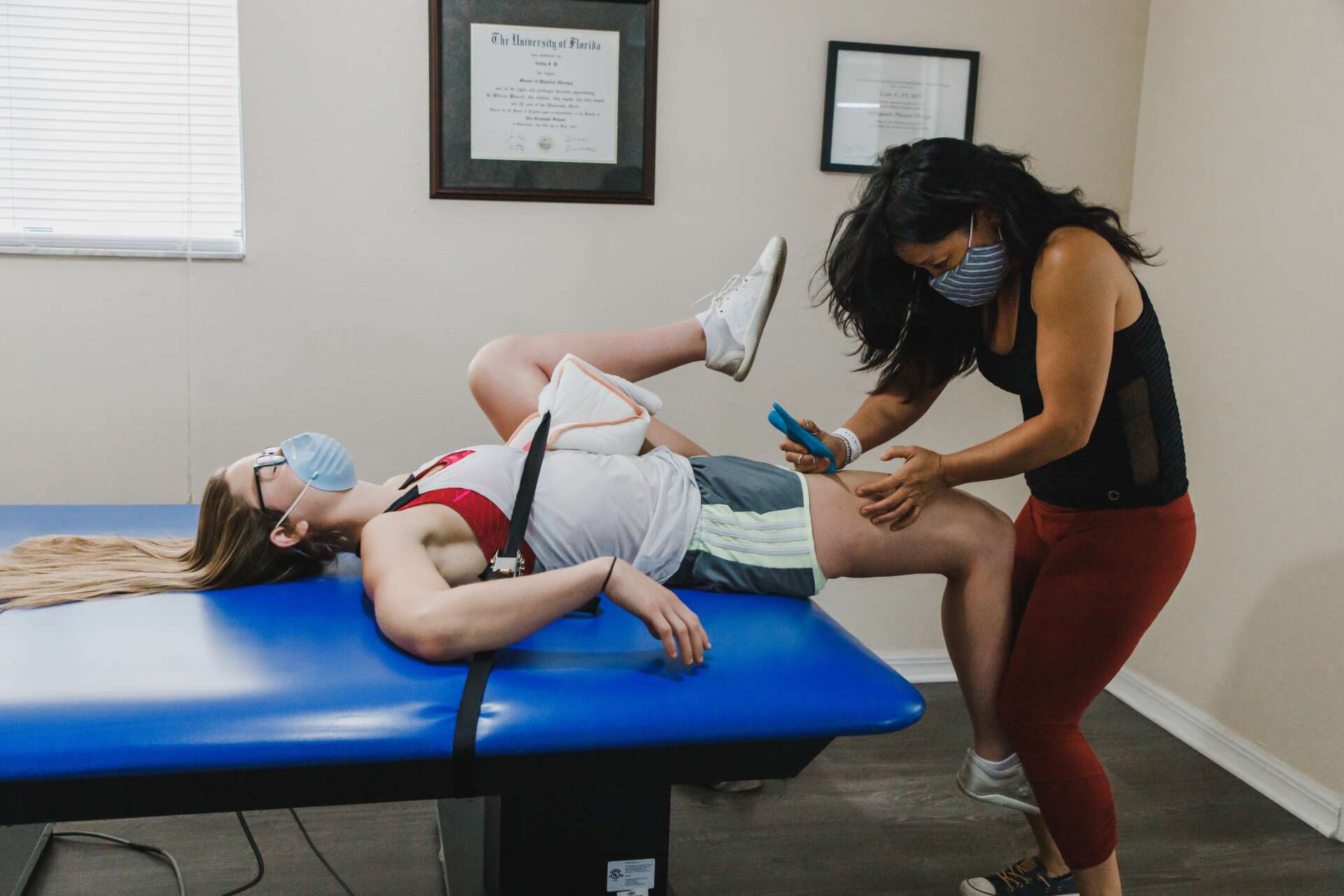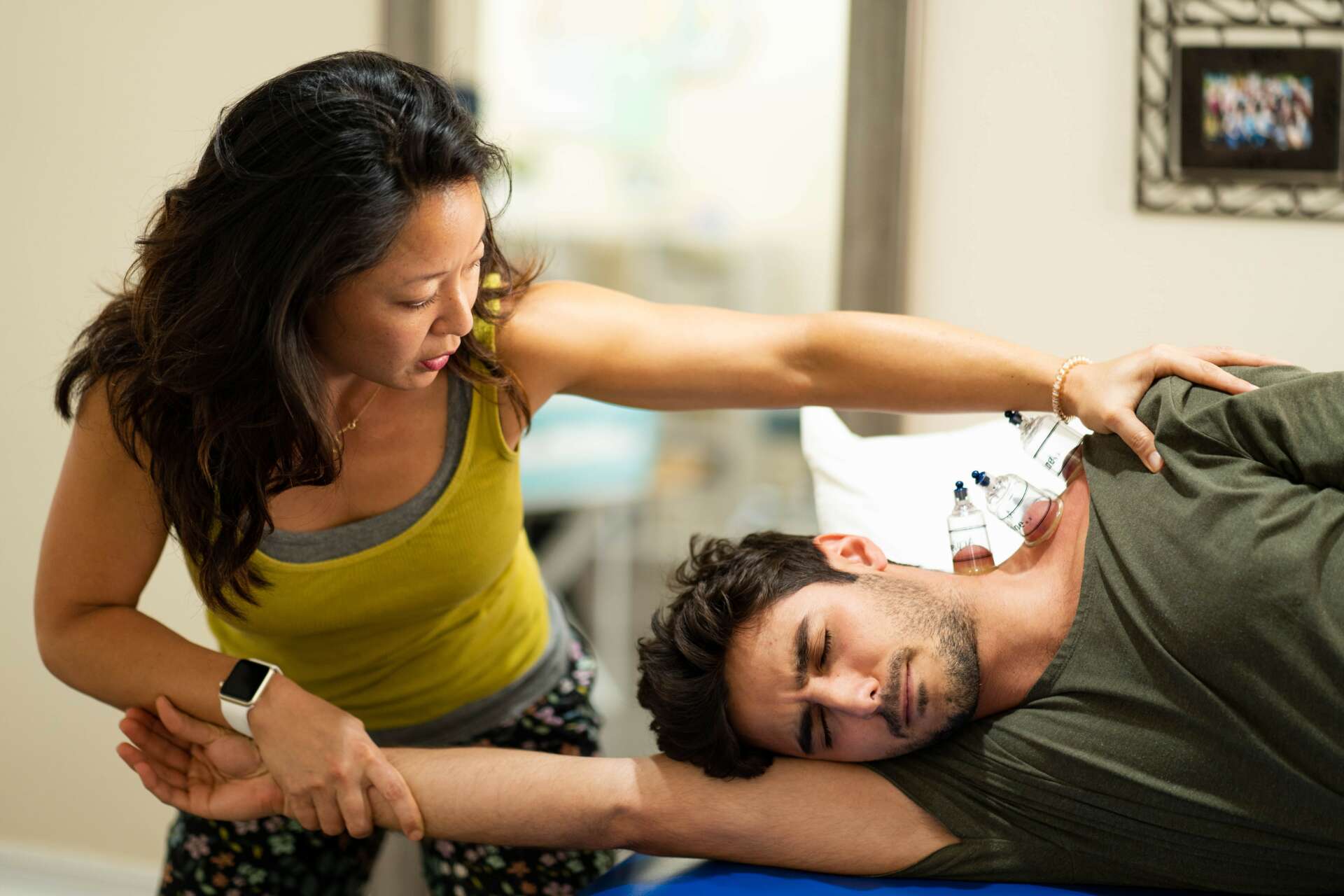We were lucky to catch up with Cathy Yi recently and have shared our conversation below.
Alright, Cathy thanks for taking the time to share your stories and insights with us today. Can you open up about a risk you’ve taken – what it was like taking that risk, why you took the risk and how it turned out?
Since I graduated in 2001, I fell into the rote belief of needing a full-time job that provided patients and benefits in order to ‘make it’ and maintain security. I never entertained deviating from this even at years 7… then 10… then 12 because I couldn’t fathom losing the concept of a patient flow and having medical insurance in spite of observing: how I had to treat 3 patients an hour, how I barely got a chance to perform any hands-on skills, how the typical clinic environment mandated documentation to insurance standards that further took time away from the patient, and how I was not assured my patients would even remain my patients because scheduling was spread amongst the staff. Despite the constrictions of the typical PT clinic setting, I always took the extra pains to assure each patient received hands-on care. I had a strong, innate desire for my patients to get well, but also to figure out why they were in pain to begin with. I would come up with rigs (since I had such limited 1:1 time with my patients) that would combine a stretch with a modality while the patient would have to perform some sort of activation. I would puzzle out why a particular structure would repeatedly be troublesome for a patient and cultivate a manual intervention or a modality to address the origin of their issue versus simply their symptoms. By year 14, I knew I loved the profession, but also knew the environment didn’t allow for true care. Yet, I was still scared to consider going out on my own.
Around year 15, being under the umbrella of my then-husband’s insurance allowed me to attempt being employed at a setting that promoted 1:1 care, but I had to market for patient flow. It doesn’t sound scary on paper, but to a healthcare professional that only knows treatment, it was very daunting at first. I grew in many ways during this time — I was able to expand my manual/hands-on skills in a huge way while working 1:1 consistently with patients that stayed on my schedule (while also experimenting on myself for my own pain relief, but also to make sure I knew what it felt like to receive the treatment), but also built knowledge in the direction of business structure, growth, and marketing. By year 16, I lost the security umbrella of my now ex-husband’s benefits coverage and was able to live the reality that I didn’t require the provided patient flow nor a company’s benefit package to ‘make it’ in the real world. This step, this realization was salient because it helped me experience that you could navigate this life outside of the set beliefs of needing a full-time job with benefits to successfully live.
However, I was still resistant to taking that final step with opening my own business. I felt more comfortable with the idea of partnering or being a “VP” as opposed to an ‘owner’. Circumstances developed and changed by year 18. I prowled large-chain banks, small-chain banks, and credit unions for either a personal loan or business loan. I learned the hard way what net worth truly meant and also learned that I did not have any. I was not approved for any sort of loan. It was two credit cards and a small loan from my lovely friend (who had full faith in me) that was all I had to begin my own venture. The day I decided to look for a space, the first ‘for rent’ sign I drove by somehow worked to be the place I would open my business. I sought opinions, feedback, and education on: forming/building my website, what my logo should look like, what should go in the lobby, what the intake paperwork should involve, etc. all in record time. Then, I simply opened my doors, vowed I would give it my all to provide excellent care to stand out enough to create a word-of-mouth following, and began!
After having just paid for first and last rent in my new business location where I had no adequate additional funds or even a patient base, I’ll never forget turning to my friend (who had long-term experience being a SBO) with wide eyes and asking: “What do I do now?” She simply replied, “You make it happen.” I resisted, but the Universe shoved me out there with a kick in the butt and it did happen. I couldn’t be more Blessed and couldn’t feel more fortunate to be able to treat wholistically in the manner true healthcare should be.




Great, appreciate you sharing that with us. Before we ask you to share more of your insights, can you take a moment to introduce yourself and how you got to where you are today to our readers
I LOVE helping people. I love it. I love puzzles and figuring out the mechanics of how something works — be it the human anatomy, for being handy around the house, for promoting maximum efficiency in processes, etc.
When it comes to the everyday aches, pains, orthopedic conditions, and functional issues we all suffer from, what better way to help anyone and everyone to feel better when they’ve lost hope for restoring what was lost?
My approach is unique. I observe as well as manually assess if your body’s joints and muscles/tendon/fascia (levers and pulleys) move appropriately. When they do not, one set of muscles/tendons/fascia will be overactive while the contrasting sets of levers/pulley will be inhibited; take that a step further and you’ll find that cycle of overactive to inhibited is tied to what postures you favor to lapse into. Years of our body’s lever and pulley systems working asymmetrically start with the usual “cracks/pops”, to aches/strains, to onset of pain, to chronic pain. I perform manual therapy skills to aid restoring the symmetry and balance at and around the joints so ‘overactive and inhibited’ are resolved. That way, my patients not only feel relief, but they feel taller, more evened out, they can lie on their backs evenly, lift weights with more inherent motion, find that old aches/pains they assumed were due to age are resolved, etc.
In a world of exercise and stretch, I actually believe the benefits will plateau if your body’s pulleys/levers (mechanics) are ‘off’. Exercise and stretch will always make you feel better, but if your body’s mechanics maintain ‘overactive and inhibited’ stresses around a joint, manual intervention is irrefutably required. During the period of restoring the body’s mechanics, certain motions can be promoted to aid efficiency of return of appropriate mobility, but my patients will find that I do not dole out ‘exercise regimens’ as homework — I prescribe interventions that mimic releases and mobilizations I perform on the patient to compete with the years it took to lapse into their present situation.
My methods question things such as: “Why does this structure keep re-tightening?”, “Why does the patient not have full relief if they stretch, wear proper shoes, and wear orthotics?”, “Why does going to the chiropractor/massage therapist every other week not have their pain resolved?”, “If my previous interventions have not worked, what am I needing to incorporate to make the appropriate change?” I can stay awake at nights until I come up with an intervention or answer. I want more than someone to ‘feel some relief’, I want the ailment resolved. More often than not, addressing the actual mechanics (promoting the joints, levers, & pulleys) to rest and function from neutral can offer the true resolution to the ailment. True resolution does not equate to “I’m much better, but I have to keep doing ‘this stretch’ and ‘this exercise’ or it will come back.”.
One of the biggest struggles when I first opened and was marketing was the belief of: “Well, I just have the usual aches and pains due to getting older.” Why should we assume we have to hurt as we age? Because we were told that’s what happens? Because, when imaging comes back negative, doctors tell us we are simply getting old? Going along with progressive mechanical shifts, especially when not addressed, can only cause the development of pain that worsens as time goes on — it’s not age, it’s that your imbalance of ‘overactive to inhibited’ around your joint worsened over time so you’ve become more ‘shifted from neutral’ and your body has attenuated the stresses to the periphery as best it could until your whole body hurts. That is mechanical stress over time; nothing to do specifically with aging.
If your hip joints do not have symmetrical joint mobility and resting positions, your pelvis will shift (which is where your lumbar spine sits upon), then stresses will shift up the spine until you realize you have chronic neck/shoulder pain that forces you to see a chiropractor and massage therapist every other week to tolerate living life. Let’s take that scenario downward. Asymmetrical hip joint mobility and loss of motion gets taken up by the knees, into the ankles and then the feet — these can be the ‘plantar fasciitis’ diagnoses that do all the stretching, icing, never-be-barefoot, orthotic-wearing folks that still have chronic pain. Let’s not forget all the other structures in between the hips and head or hips and feet that get involved and have their own orthopedic compensations! In a world of sitting in chairs and not challenging our hips past 90degrees of flexion, no one’s hip joints have proper mobility – including my own!
My techniques and methodology are unusual. I take what I’ve learned in school, basic anatomy, interventions I learned from continuing education courses, and rules of body mechanics/physics to apply to your ailment — this can mean I developed my own way of treating and will continue to “come up” with ways to find your relief that may not be found online or in a textbook. I’m proud to be an out-of-the-box thinker. My heart bursts when patients excitedly share that they can perform a skill/function again after years of being unable, or when they finally feel relief after years of seeking intervention, or when they get to avoid surgery!
We’d love to hear a story of resilience from your journey.
I had to learn how to open and run my business in a matter of a couple of months. Circumstances dictated my having to leave my previous place of employment while finding a location to rent for opening while also preventing a delay in patient care for the three clients on an ongoing treatment plan. When I finally opened, Hurricane Michael was hitting and I remember telling my patients, “I’m going to be there if you still want to come in.” During the day, I’d work on what patients I was presently treating and then would market on foot to local, private gyms/fitness studios, tennis centers, country clubs, etc. Weekends involved yard work, personal and work errands, and marketing events where I would offer free assessments with HEP to help build clientele. This nonstop pace went on for my first 6 months of opening — and right when I thought my brain and body would give out from relentless exhaustion, COVID hit and we were in quarantine. To convey the level of exhaustion, effort, and pure will it takes to open a business, I actually viewed the quarantine as a relief!
Even with being novice, opening during a hurricane, and then shifting into a pandemic, my business grew. Patients came in, my reputation sparked, SEO began to work, and I got Blessed with consistent inflow of patients.




Do you think you’d choose a different profession or specialty if you were starting now?
I would most definitely stay in physical therapy. When I decided to go to PT school, my advisor had to shift my second year schedule to allow me to be able to apply by the end of my second year. The AP and dual enrollment courses I had taken in high school just so happened to be the ones I needed for general education credits to permit me to complete requirements to apply. She also told me I would need at least 20 hours of observation, the GRE needed to be taken, and the AHPAT needed to taken by the end of my second year. So, basically, I had the minimum requirements met of 20 hours of observation, tests were taken, and I applied only to the University of Florida for PT school. Somehow, I got in. I almost decided to leave my second year in, but I persevered. I almost left the profession 4-5 times during my, now, 21 years of practice, but I found reasons to stay. Now, I am joyful I made it far enough to have this practice and make it the best I can. I am grateful to be able to provide care in the manner it was always meant to be given.
Contact Info:
- Website: cathyorlandopt.com
- Instagram: @cathyorlandopt
- Facebook: https://www.facebook.com/CATHYORLANDOPHYSICALTHERAPY
- Twitter: cathyorlandopt
- Youtube: https://www.youtube.com/channel/UCS4FuDiTehPSdlIk6Opanhg
- Yelp: https://www.yelp.com/biz/cathy-orlando-physical-therapy-winter-park-2
Image Credits
Misbehavin’ Media is separate from Little’s Portraits


